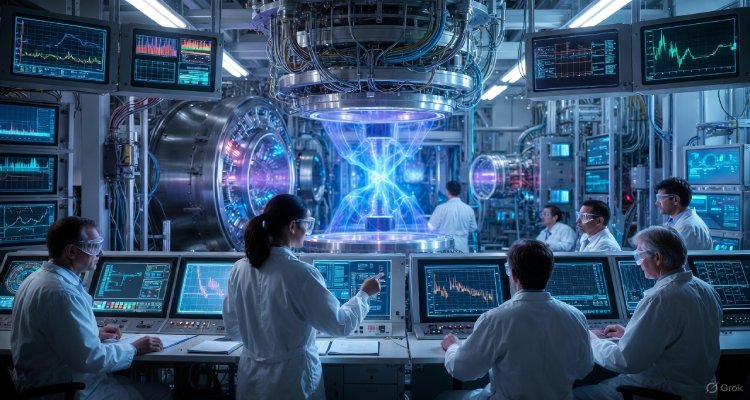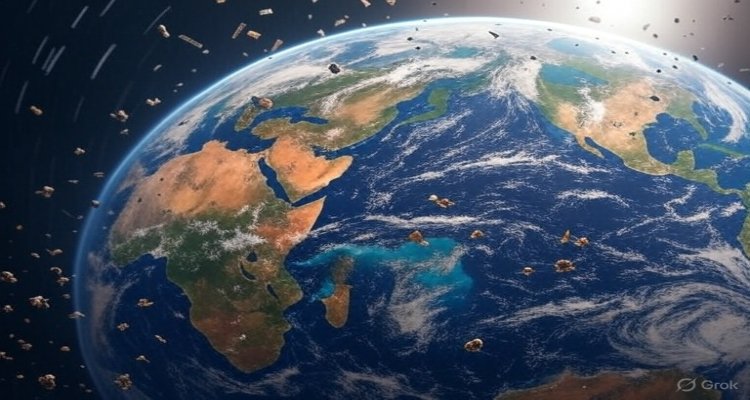Space Junk Crisis: Cleaning Up Earth’s Orbit Before It’s Too Late
Earth’s orbit is overcrowded with dangerous space junk. Experts warn urgent cleanup is needed before collisions threaten satellites and human spaceflight.
Introduction: A Silent Threat Above Our Heads
Every night, as we look up at the stars, an invisible crisis is unfolding just beyond our view. Thousands of satellites, rocket fragments, and bits of discarded hardware now circle Earth at blistering speeds. Known as space junk, this growing debris field poses a critical threat to satellites, space stations, and future exploration. Experts warn that unless cleanup efforts accelerate, Earth’s orbit could become too hazardous to navigate.
Context & Background: How We Got Here
Since the launch of Sputnik 1 in 1957, humanity has steadily filled space with machines, tools, and scientific instruments. But with every mission came waste. Old rocket stages, dead satellites, and even tiny bolts were left drifting in orbit.
Today, NASA and the European Space Agency estimate there are:
- Over 36,000 large objects (bigger than 4 inches).
- About 1 million smaller fragments (between 0.4–4 inches).
- More than 100 million microscopic pieces too small to track.
Each of these objects travels at up to 17,500 mph, fast enough to punch holes in spacecraft and cause catastrophic failures. The 2009 collision between a U.S. Iridium satellite and a defunct Russian satellite highlighted just how dangerous this debris has become, creating thousands of new fragments in minutes.
Main Developments: A Ticking Time Bomb
The risk is no longer hypothetical. In recent years, the International Space Station (ISS) has had to perform multiple “debris avoidance maneuvers” to dodge incoming fragments. In 2021, astronauts even donned spacesuits in case an emergency evacuation was needed.
Meanwhile, the rise of mega-constellations—thousands of satellites launched by companies like SpaceX’s Starlink and Amazon’s Project Kuiper—has intensified concerns. With tens of thousands of new satellites planned, experts fear a chain reaction of collisions, known as the Kessler Syndrome, could render low Earth orbit unusable for generations.
Governments and companies are now racing to find solutions:
- The European Space Agency has contracted ClearSpace to launch the first debris-removal mission in 2026.
- Japan’s Astroscale is testing magnetic docking systems to deorbit defunct satellites.
- NASA is researching robotic arms and nets to capture stray objects.
Expert Insight: Warnings From the Frontlines
“Space debris is not a distant problem—it’s happening now,” said Dr. Moriba Jah, an astrodynamicist at the University of Texas. “If we don’t change how we operate in space, we could lose access to orbit altogether.”
Space industry leaders echo this urgency. Gwynne Shotwell, president of SpaceX, has acknowledged the need for “responsible satellite management” to avoid future disasters. Meanwhile, space policy analysts argue that international cooperation is the only way forward, since debris knows no borders.
Public sentiment is also shifting. Once a niche scientific concern, space junk has entered mainstream discussions, raising awareness of how dependent modern life is on satellites—for weather forecasts, GPS, banking systems, and global communications.
Impact & Implications: Why It Matters to Us
The consequences of unchecked space debris would ripple far beyond astronauts and rocket scientists. Everyday technologies like internet connectivity, emergency communications, navigation apps, and weather tracking all rely on satellites vulnerable to collisions.
If low Earth orbit becomes too dangerous, future missions—to the Moon, Mars, or beyond—could be jeopardized. Insurance costs for satellite launches are already rising, and companies may hesitate to invest in space ventures if risks continue to grow.
On the other hand, the crisis also opens opportunities. A new industry focused on “space sustainability” is emerging, with startups developing cleanup technologies, reusable spacecraft, and smarter satellite designs. Much like recycling on Earth, orbital cleanup may soon become a standard business and policy priority.
Conclusion: A Closing Window of Opportunity
Humanity has transformed Earth’s orbit into a vital extension of our civilization—but it has also made it a junkyard. The space junk crisis is no longer a background issue; it’s an urgent challenge that demands innovation, funding, and global cooperation.
As scientists warn, the window to act is closing. Cleaning up space may be one of the greatest engineering and political challenges of this century—but without action, we risk losing access to the stars before we even get there.
Disclaimer : This article is for informational and educational purposes only. It does not constitute scientific, financial, or policy advice.











